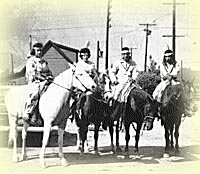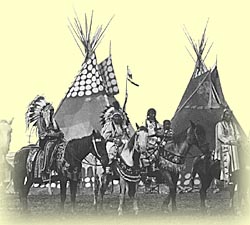Over the centuries, Native people have gathered in temporary villages to trade, hold sacred ceremonies, and participate in Native and non-Native celebrations such as Treaty Days in Canada and Independence Day in the United States. The celebrations usually included foot races, horse races, singing, dancing, betting games and, in the last hundred years, a rodeo. These "Indian Villages" became an important part of fall fairs and larger rodeo performances in western Canada and the United States. Today, people from many Native cultures gather at rodeos to share stories and dances, sell their arts and crafts, and celebrate their heritage.
... the Indian Days started in the twenties on the Kamloops Indian Reserve. They had all kinds of events and rodeo, horse racing, lacrosse games, baseball games, Indian dancing, lahal games, which was a gambling game that the Indian people used to play. We always had a parade and a lot of authentic Indian foods, and the Indian school used to participate and they would sell food. Muriel Gottfriedson Sasakamoose, Kamloops
page 1 | page 2 | page 3 | page 4 | page 5 | page 6 Introduction | Indian Days and Parades | Wild West Shows | Indian Villages and Pow-wows | Mounted Police | Entertainers | Motion Picture Industry SACRED BEINGS | RANCHING | ENTERTAINMENT | RODEO | ARTS AND INDUSTRIES |



